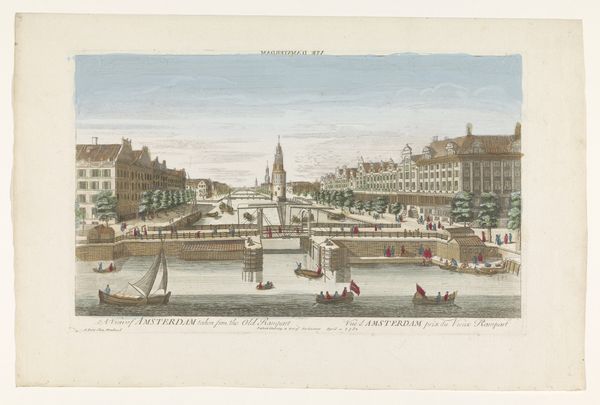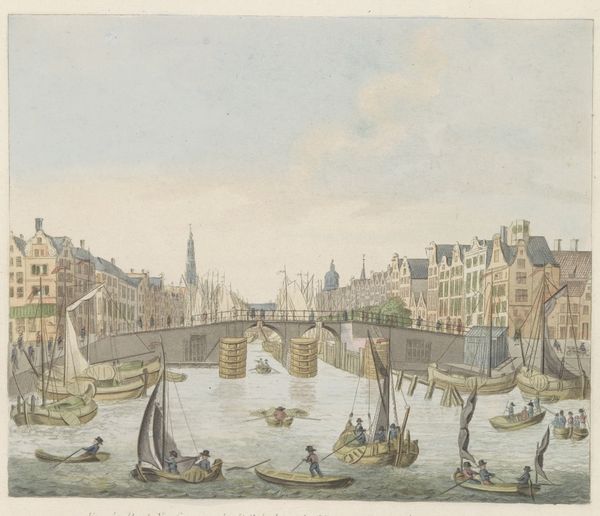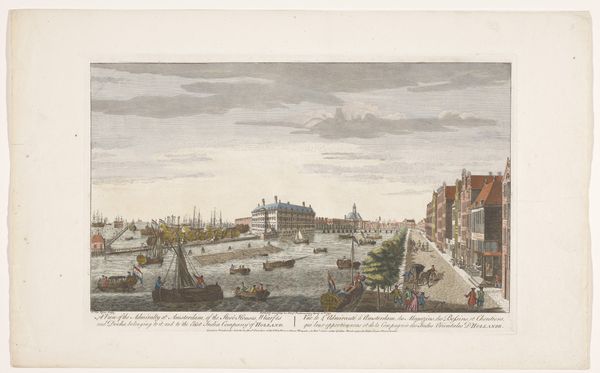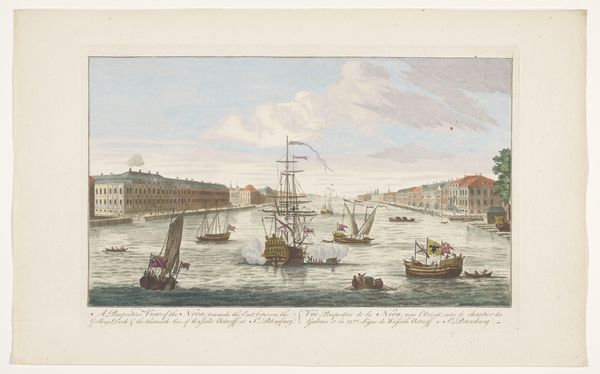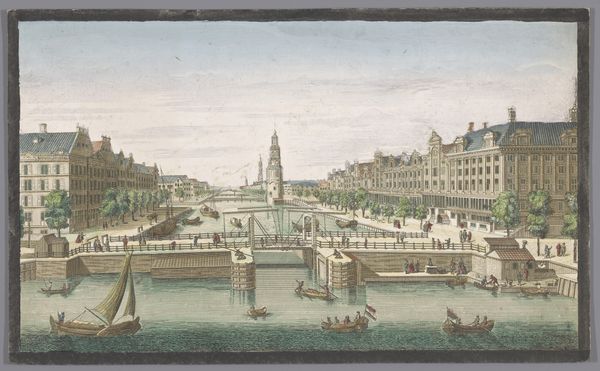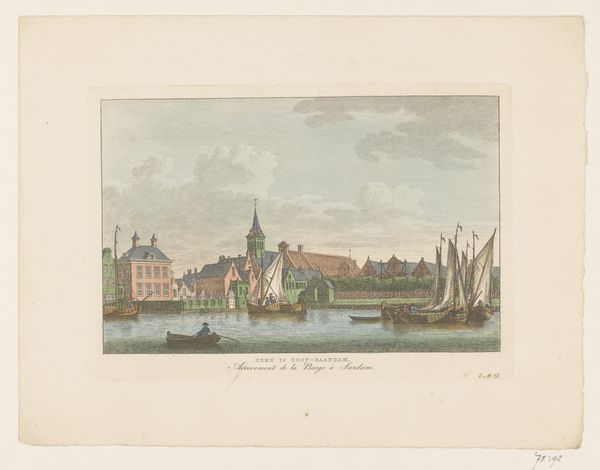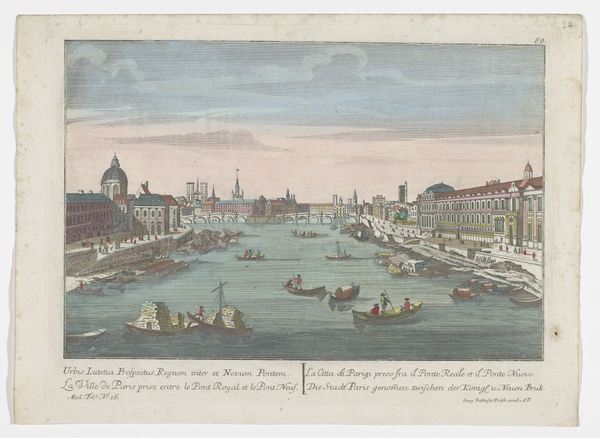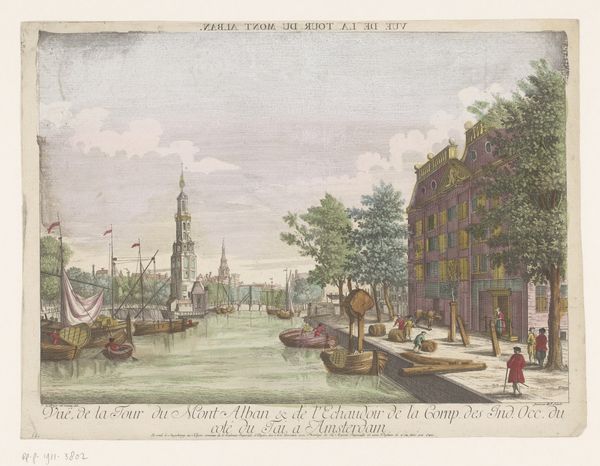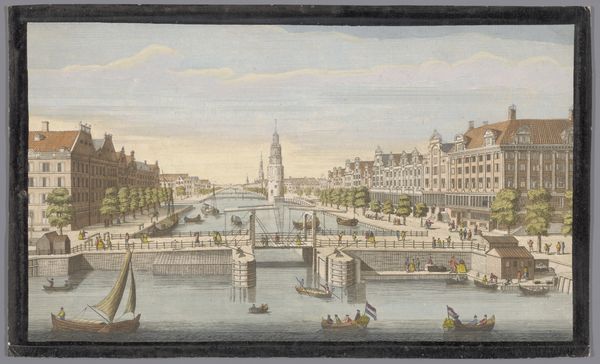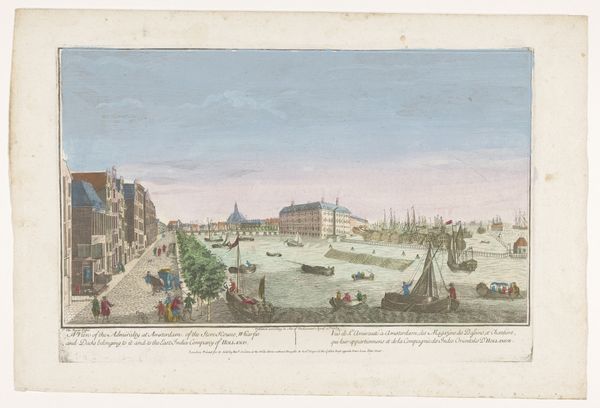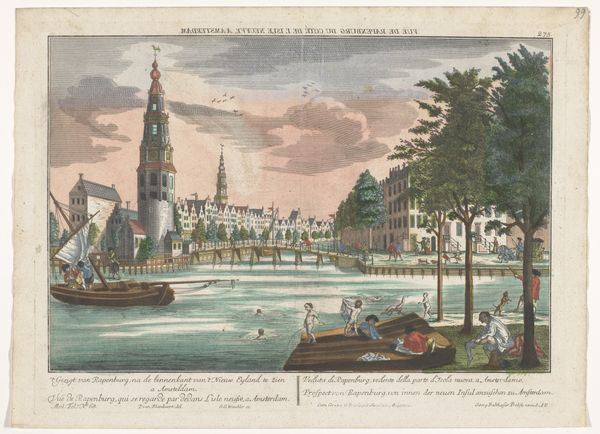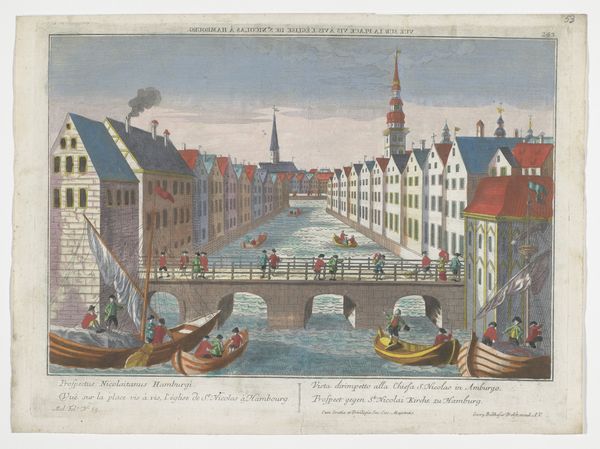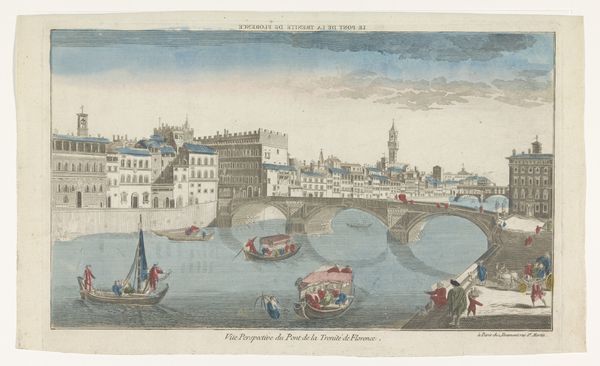
Gezicht op de Oudeschans te Amsterdam gezien vanaf het IJ Possibly 1752 - 1754
0:00
0:00
painting, print, watercolor
#
baroque
#
dutch-golden-age
#
painting
# print
#
landscape
#
watercolor
#
cityscape
#
watercolor
Dimensions: height 257 mm, width 393 mm
Copyright: Rijks Museum: Open Domain
Curator: This delicate watercolor is titled "Gezicht op de Oudeschans te Amsterdam gezien vanaf het IJ," or "View of the Oudeschans in Amsterdam Seen from the IJ," believed to have been created sometime between 1752 and 1754. The artist credited is Robert Sayer. Editor: The overall impression is peaceful, but there’s also an underlying feeling of organized activity. The cityscape itself seems to stretch into infinity, painted in a very soft, ethereal palette. Curator: It is evocative of Amsterdam's Golden Age and the rise of the merchant class, wouldn't you agree? There's an emphasis on perspective, drawing the viewer's eye towards the heart of the city, represented by the church tower in the background. Editor: I am seeing so many people on the streets, near the canals, almost as if all levels of society were part of that trade and urban development. It reflects a very active social landscape in Amsterdam. There is a silent nod to the water as the way to new capitalistic adventures in foreign territories. Curator: You read that really well. Sayer chose this viewpoint to show Amsterdam as a vibrant trading center. Note how water functions almost as a mirror, both literally and metaphorically. What is reflected? Industry, prosperity. Editor: It’s almost propagandistic in its message, isn't it? We know those fortunes weren't equally shared. We have to examine how the presentation of such scenes shaped collective memory. It’s lovely, yes, but who truly benefited from this "progress"? Curator: Indeed. While capturing a very precise location, Sayer’s choice of rendering lends an idealised feeling to the urban landscape. It certainly invites a discussion of power structures present even then. Editor: Precisely. The details draw you in, but then, thinking critically about whose narrative is prioritised and preserved transforms a simple appreciation into deeper, necessary conversations about cultural and political dominance. Curator: Such viewpoints make it all the more crucial that we revisit these works with a discerning eye. Thank you for pointing us in that direction. Editor: And thank you for illustrating how even placid landscapes contain within them so much ideological energy, inviting reinterpretation and renewed socio-political engagements.
Comments
No comments
Be the first to comment and join the conversation on the ultimate creative platform.
